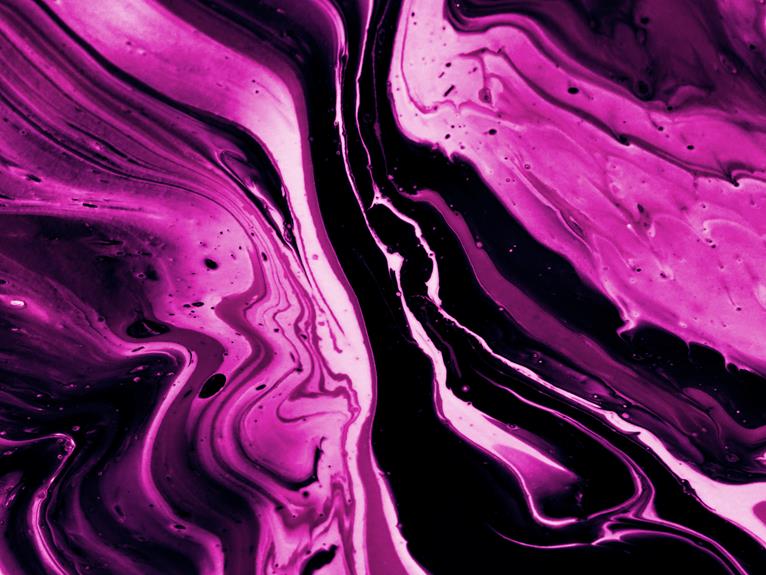Prepare to dive into the fascinating world of martial arts and discover the essence of the gi.
This timeless attire, designed by Kanō Jigorō in the early 1900s, encompasses tradition, practicality, and cultural significance.
From its origins to its various uses, we will explore the materials, colors, and symbolism behind this iconic uniform.
Whether you are a seasoned practitioner or an aspiring martial artist, this article will equip you with the knowledge needed to fully appreciate the profound role of the gi in the martial arts community.
Key Takeaways
- A gi, also known as a dōgi or Keikogi, is a traditional uniform consisting of a jacket and trousers in martial arts.
- Gis are worn for practicality, retaining the history and integrity of martial arts, focus, identification, and commonality among martial artists.
- Martial art gis are made of 100% cotton or a cotton-polyester blend, with varying fabric weights and weaves.
- Judo, Brazilian jiu-jitsu, Japanese jiu-jitsu, and many other martial arts use a gi, each with their own unique name for it.
Origins and History of the Gi
The origins and history of the gi can be traced back to the early 20th century when Kanō Jigorō, the founder of Judo, introduced this traditional uniform.
The gi has since evolved in design, adapting to the needs and preferences of different martial arts disciplines. This evolution has resulted in various styles and variations of the gi, each with its own unique features and characteristics.
The cultural significance of the gi in martial arts cannot be understated. It not only serves as a practical and functional attire for training, but it also symbolizes the rich history and traditions of the martial arts.
Wearing a gi fosters a sense of discipline, respect, and unity among practitioners, creating a deeper connection to the art and its roots. The gi is not just a piece of clothing; it is a representation of the martial arts ethos and a testament to the dedication and commitment of those who wear it.
Importance and Purpose of Wearing a Gi
Wearing a gi in martial arts serves a significant purpose in fostering discipline, respect, and unity among practitioners. The advantages of wearing a gi are numerous, and the cultural significance of the gi cannot be understated. Here are four key reasons why wearing a gi is important in martial arts:
- Tradition: The gi retains the history and integrity of the martial art. It symbolizes the connection to the past and the continuation of a long-standing tradition.
- Respect: Wearing a gi demonstrates respect for the art, the instructor, and fellow practitioners. It shows humility and a willingness to adhere to the traditions and values of the martial art.
- Focus: The practical uniform of the gi helps create a focused training environment. By wearing a gi, practitioners mentally prepare themselves for training and leave behind any distractions from the outside world.
- Unity: Wearing a gi promotes a sense of community and unity among martial artists. It allows everyone to identify one another, fostering camaraderie and a shared purpose.
Materials Used in Martial Art Gis
Materials commonly used in martial art gis include various blends of cotton and polyester, with different fabric weights indicating the density of the gi. Cotton-polyester blends offer a combination of the advantages of both materials. Poly-cotton gis are lighter, more breathable, and less likely to shrink when washed. They are ideal for practitioners who prefer comfort and durability. On the other hand, 100% cotton gis are heavier and more expensive, making them suitable for formal demonstrations and competitions. They provide a traditional feel and are often favored by traditional martial arts practitioners.
Here is a comparison of cotton and polyester gis:
| Cotton Gis | Polyester Gis |
|---|---|
| Heavier and more expensive | Lighter and more affordable |
| Traditional feel | Modern and sleek appearance |
| Less likely to fade | Retains color well |
| Shrinks when washed | Resistant to shrinkage |
| Suitable for formal events | Ideal for daily training |
When choosing a gi material, it is important to consider the pros and cons of each option. Cotton gis provide tradition and durability, while polyester gis offer affordability and ease of maintenance. Ultimately, the choice depends on personal preference and the specific needs of the martial artist.
Different Weave Types in Gis
Differentiating between martial art gis goes beyond just the materials used; it also involves understanding the various weave types available. The weave type of a gi refers to the pattern in which the fabric is woven together. Each weave type offers its own unique benefits and characteristics.
Here are four common weave types in gis:
- Single Weave: This weave type is lightweight and flexible, making it ideal for practitioners who prefer a more agile and breathable gi.
- Double Weave: Double weave gis are thicker and more durable, providing extra protection and resistance to wear and tear.
- Gold Weave: Gold weave gis strike a balance between durability and flexibility, making them popular among both competitive and casual practitioners.
- Pearl Weave: Pearl weave gis are known for their strength and comfort. They are lightweight, yet highly resistant to stretching and shrinking.
Understanding the different weave types in gis allows martial artists to choose a gi that best suits their training needs and preferences. By selecting the right weave type, practitioners can optimize their performance and comfort during training sessions and competitions.
Martial Arts That Utilize the Gi
Several martial arts disciplines utilize the gi as part of their training attire. The gi holds great cultural significance and provides numerous benefits to martial artists. It represents tradition, respect, and discipline, while also serving practical purposes during training and competitions. The following table showcases some of the martial arts that utilize the gi:
| Martial Art | Gi Name | Origin |
|---|---|---|
| Judo | Judogi | Japan |
| Brazilian Jiu-Jitsu (BJJ) | Brazilian Jiu-Jitsu Gi | Brazil |
| Karate | Karategi | Japan |
| Aikido | Aikidogi | Japan |
| Taekwondo | Dobok | Korea |
The benefits of wearing a gi go beyond aesthetics. The gi's practicality allows for comfortable and safe training, with its durable fabric and reinforced stitching. Additionally, the gi promotes unity and a sense of community among martial artists, as everyone wears the same uniform regardless of their skill level. The cultural significance of the gi fosters a deeper connection to the martial art's origins and traditions, enhancing the overall experience and mastery of the art.
Symbolism of Gi Colors in Martial Arts
The symbolism of gi colors in martial arts plays an important role in distinguishing ranks and representing the journey and achievements of practitioners. The meaning of gi colors can vary between different martial arts and schools, but they generally carry cultural significance as well.
Here are four common interpretations of gi colors in martial arts:
- White: White gis are often associated with beginners and signify purity and a blank slate. They represent the starting point of a martial arts journey, where practitioners are eager to learn and develop their skills.
- Blue: Blue gis are typically worn by more advanced practitioners and symbolize knowledge and experience. They indicate a deeper understanding of techniques and a higher level of proficiency in the martial art.
- Black: Black gis are often reserved for black belt holders and represent mastery and expertise. They signify the culmination of years of dedicated training, discipline, and the highest level of skill in the martial art.
- Additional Colors: Some martial arts may have additional colors to represent different levels of achievement or specialization. These colors can vary and may hold specific meanings within the context of the martial art.
Understanding the symbolism of gi colors in different martial arts adds depth and significance to the uniform, reflecting the progress and dedication of practitioners on their martial arts journey.
Significance of White, Blue, and Black Gis
Signifying different levels of experience and achievement, white, blue, and black gis hold significant meaning in martial arts.
The cultural significance of gi colors in martial arts can be traced back to their origins in Japan. In traditional Japanese martial arts, white gis are often worn by beginners, symbolizing purity and a blank slate for learning.
As practitioners progress and gain knowledge, they may transition to blue gis, representing their growing experience and understanding.
Finally, black gis are typically reserved for those who have achieved the rank of black belt, denoting mastery and expertise in their chosen martial art.
However, it's important to note that the evolution of gi colors in modern martial arts has led to variations and additional colors to represent different levels of achievement or specialization, depending on the specific martial art and its ranking system.
Variation of Gi Colors in Different Martial Arts
There are various gi colors utilized in different martial arts to indicate levels of achievement or specialization. These colors hold cultural significance and have evolved over time along with gi designs. Here are some examples:
- Red: In some martial arts, a red gi signifies a high level of expertise and mastery. It is often reserved for instructors or senior practitioners who have attained a certain level of skill and knowledge.
- Yellow: In certain martial arts, a yellow gi may represent a student who is progressing towards a higher rank or level of proficiency. It symbolizes growth, learning, and dedication to the practice.
- Green: In other martial arts, a green gi may be worn by practitioners who have achieved a specific level of proficiency or specialization. It can represent a deeper understanding and application of techniques within a particular discipline.
- Gold: In certain martial arts, a gold gi may be awarded to individuals who have reached the pinnacle of their training. It signifies exceptional skill, dedication, and mastery in the art.
The evolution of gi designs has allowed for the inclusion of various colors, each with its own cultural significance and meaning. These colors not only add visual diversity to martial arts uniforms but also serve as a symbol of accomplishment and expertise.
Frequently Asked Questions
How Often Should a Martial Arts Gi Be Washed?
The frequency of washing a martial arts gi depends on factors such as intensity of training, personal hygiene, and environmental conditions. It is generally recommended to wash the gi after each training session to maintain cleanliness and hygiene. Follow the washing instructions provided by the manufacturer to ensure longevity and preservation of the gi's quality.
Are There Any Specific Rules or Etiquette to Follow When Wearing a Gi?
When wearing a gi in martial arts, it is important to follow specific rules and etiquette. This includes wearing appropriate attire for each martial art, respecting the gi as a symbol of tradition, and maintaining cleanliness and neatness in appearance.
Can Gis Be Customized or Personalized With Patches or Embroidery?
Customized gis allow martial artists to personalize their uniforms with patches or embroidery. This adds a unique touch to their attire, showcasing their individuality while still adhering to the traditional and practical aspects of wearing a gi.
Are There Any Restrictions on the Design or Color of Gis in Certain Martial Arts?
There are specific rules and restrictions on gi design and color in certain martial arts, ensuring uniformity and maintaining the integrity of the art. These regulations vary between styles and schools, emphasizing tradition and discipline in martial arts practice.
Are There Any Specific Care Instructions for Maintaining the Quality and Longevity of a Gi?
When it comes to maintaining the quality and longevity of a gi, proper care is essential. This includes washing it according to the manufacturer's instructions, avoiding harsh detergents or bleach, and air drying it to prevent shrinking or damage.
Conclusion
In conclusion, the gi is a traditional uniform worn in martial arts that holds significant importance in the practice. It provides practicality, historical connection, and promotes unity among practitioners.
Made of various materials and available in different colors, gis serve as a visual representation of ranks and positions within martial arts.
Whether it's the history of the gi or the symbolism behind its colors, understanding the significance of the gi adds to the overall experience and understanding of martial arts.
- 15 Best Martial Arts Weapons (Fighting & Training) - October 14, 2024
- Is Fencing a Martial Art? (Yes, 4 Reasons Why) - October 14, 2024
- 7 Best Martial Arts for Self-defense Ranked (Highly Effective) - October 14, 2024










